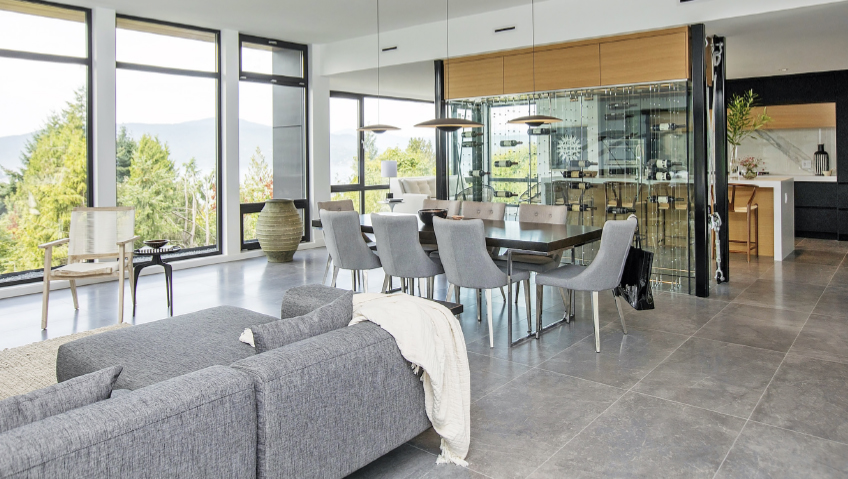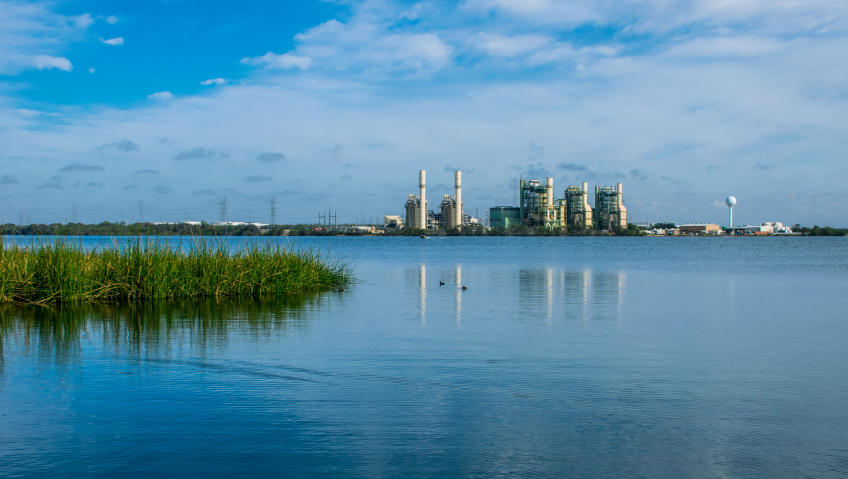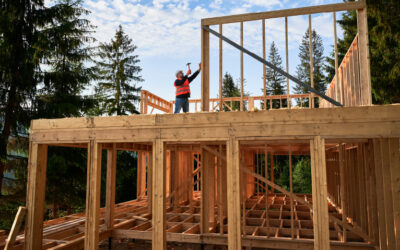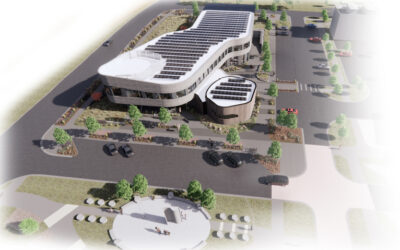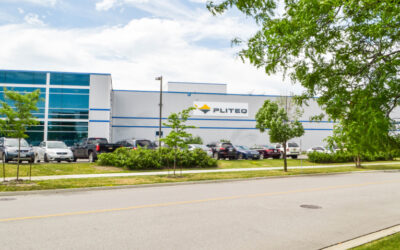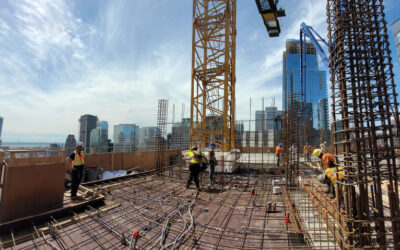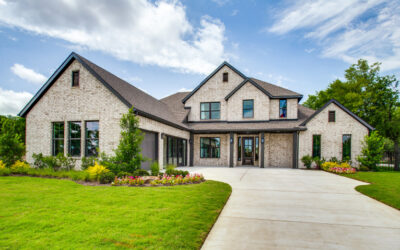In the quest to be as ecologically and environmentally aware as possible, BC-based Hasler Homes Ltd has taken its building process to a new level with its ongoing commitment to Net Zero construction, while still creating stunning homes for clients determined to limit their carbon footprint.
Yes, it is very possible to create an environmentally friendly building that is also high-efficiency, although it can be a challenge to convince consumers of that, says Hasler Homes owner Greg Hasler. His company’s detailed, eco-aware building process takes into consideration essential aspects of both the build and the environment, while giving clients everything they desire in their new dwelling.
“When we start the actual physical build, we typically go over, with the client, what the options are for achieving Net Zero in the first place, or achieving a certain Step Code requirement,” says Hasler.
Net Zero and Net Zero Ready Homes offer a wide range of benefits, such as exceptional indoor air quality coupled with first-rate energy performance through the use of cutting-edge technologies and construction practices. Hasler-built homes also exceed both current and anticipated building code requirements, with every Net Zero and Net Zero Ready Home verified by government-licensed third-party service organizations and recognized by the Canadian Home Builders’ Association (CHBA).
The company will guide clients through the entire process of building in a more sustainable way, often beginning with the Built Green checklist. Built Green Canada is an influential industry-driven certification program created to establish and promote sustainable business practices. Its standards address the areas of energy and envelope, materials and methods, indoor air quality, ventilation, waste management, water conservation, and business practices, and Hasler Homes believes that this is a strong framework for introducing clients to the breadth of options they have for building a more sustainable home.
“Communication with our clients is key from the start,” says Hasler. The process usually begins with talking about the importance of using ICF Foundation insulation forms, as well as the type of concrete being selected for a home, including the use of fly ash, which adds strength and durability to hardened concrete.
From there, the discussion typically moves to the envelope of the building, and how the thickness of slabs used beneath the house affect energy loss and the insulation values of the home. “We walk them through those steps, and then discuss the exterior of the building, such as the waterproofing products used,” says Hasler. (Unlike many more traditional builders, Hasler uses SIGA waterproofing on about 95 percent of its buildings.)
After discussing the benefits of having a house wrapped from the outside – akin to wearing a jacket, says Hasler – communication continues regarding the client’s ultimate objectives in home-building, both functionally and aesthetically.
“We ask the owners what they’re looking for, what they’re trying to achieve,” he says. “Are they looking for comfort in the house? When that topic comes up, we typically go into the mechanical systems of the house. I still get a lot of people who really like the in-floor radiant heat, and we talk about the benefits of using exterior air-to-water heat pumps paired with electric. We’re always looking for products running at higher efficiencies,” he says.
Through these constant back-and-forth discussions, Hasler establishes what products would most benefit clients and also boost the home’s overall efficiency.
The next step of the process involves plumbing, with heat-recovery systems and boilers being the typical choice. In a shower, for example, as used warm water flows down the waste drain, incoming cold water flows up through a spiral copper tube wrapped tightly around the copper section of the waste drain and is heated up. Essentially, the homeowner is raising water temperature without additional energy costs.
“It’s one of the cheapest and most energy efficient things you can do in a home,” says Hasler.
“Next comes window choice, whether double pane or triple pane, a decision that really comes down to budget and what u-values we are trying to it,” says Hasler. “A lot of people need to feel the windows to see what’s to their benefit, what they like and don’t like about them.”
The final discussion before beginning the interior usually involves solar panels – a trend that’s definitely on the up, says Hasler, as more clients looks for long-term ways to save money and help save the environment.
“People come to us and say, what can we do that is energy efficient, and what can we do better. I do think people have that kind of outlook on homes right now.”
While British Columbia’s Energy Step Code looks for a Step 3 energy efficiency to be achieved, the Hasler team tries to ensure they build a Step 4 or 5 on every house, which means close to or Net Zero ready, a point of pride for the company.
“It doesn’t matter what clients apply for, we just try to make sure that we’re reaching Step 4 or 5 every time,” says Hasler, although he says the higher step request is becoming more commonplace. “Five years ago that wasn’t the case at all because there was no Step Code. Often I felt the owner just wanted a well-built home, which is totally reasonable and
understandable.”
It’s hard to imagine a new homeowner not wanting to take advantage of all the benefits a Net Zero home provides. Eco-friendly home builders are the face of the future, which means more zero-energy homes are on the horizon, boasting airtight, well-insulated energy efficiency that conserves and produces as much renewable energy in total as they consume over the course of a year. This leaves the owners with a net zero energy bill, and a smaller carbon footprint.
So, if you’re looking to be environmentally responsible while enjoying domestic comfort all year round, a Net Zero home is the way to go.
With superior heating, cooling, and ventilation creating even temperatures throughout the house, even the enhanced air quality provides healthier living. A built-in filtered fresh air system also reduces allergens and asthma issues found with dust, pollen and outdoor air pollution.
Other benefits include reduced noise intrusion from outside and all-time low utility bills that stay low year round, protecting owners from future increases in energy prices. Net Zero homes are also more durable, built to higher standards than conventional new homes.
“Our mandate and goal for our company is to get 50 percent of our clients to go Net Zero,” says Hasler. Cost, unfortunately, can be a deterrent for those looking to embrace the build. “I feel right now, with how expensive lumber is currently in our market, and buying a house in Vancouver, the average house price you’re tearing down is $1.5 million and then you have to build from there. So it’s not cheap.”
Although Hasler is keeping extremely busy this year with a number of custom projects that
will meet the Net Zero policy, the industry still has a way to go in educating clients on building better. For a lot of clients, he says, it does come down to how they want to prioritize their budget – it is one of the biggest investments in their life, so many clients simply want a home built right.
“For me, I don’t want to build a house that’s outdated when you put it in the ground,” he says. “You want to make sure you’re building a house that’s going to be for the future. You have to look at that part of it and we try to convey that message to the owner as clearly as possible.”
As the company tackles one of its biggest, busiest years ahead, Hasler stresses that although he owns and founded the business, his team is what makes it the success it continues to be.
“I wouldn’t be where I am today without the other men and women in my company that helped build it,” he says. “Our core values are family comes first, team accountability and transparency. I help lead, coordinate and problem-solve, but our team is what brings it to life. I think that’s probably the thing that I’m most thankful for.”
He adds that sometimes clients may not realize how much the workers around you help build a company and make it what it is. The “team” part of Team Hasler is something that he’s really realized the importance of in the last five years.
“I would love to say it’s all me but that’s not true!” he says. “I played sports my whole life growing up and I’ve always tried to keep that team mentality.”
With its impressive dedication to environmental awareness and energy efficiency, one of Hasler Home’s goals is to help as many clients as possible embrace eco-friendly practices for the future.
“When a client calls us and they say they want to be Net Zero, we can help them achieve it,” he says. “There’s a lot of ways to get there, and it’s actually a much more exciting process because the clients are also so excited about doing it. It does take more organization and planning, but it’s more about doing things better, and helping out the planet, so it’s worth it. It’s a fun process for sure.”

